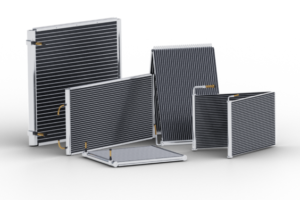In today’s moving healthcare world, the significance of medical scribes is growing rapidly. Healthcare professionals are always looking for ways to enhance care while efficiently managing their time and resources. Meet the scribe—a game changer set to transform how healthcare providers document interactions with patients. This article will delve into the aspects of medical scribing, its advantages, and its influence on the future of healthcare.
Introduction to Remote Medical Scribing
What Does a Remote Medical Scribe Do?
A remote medical scribe is a professional who supports healthcare providers by documenting patient visits in time. Unlike scribes who work on location, remote medical scribes operate from a place, often using secure online platforms to access and record patient details. This setup enables healthcare providers to concentrate more on care than administrative duties.
Significance in Contemporary Healthcare
The increasing intricacy of healthcare documentation has made the role of scribes easier. Remote medical scribes play a role in easing the load on physicians, allowing them to see more patients and offer superior care. This transition is especially significant in an era where healthcare systems are under strain and efficiency is vital.
In this article, readers will explore the benefits of using scribing, the technology behind it, and real-life examples of its impact. We will also analyze factors to consider when incorporating scribing into your practice and look at emerging trends that may influence the industry.
Advantages of Remote Medical Scribing
Enhanced Healthcare Efficiency
A medical scribe’s advantage is its ability to boost efficiency in healthcare settings. By managing documentation tasks, remote scribes enable doctors to dedicate time to patient care. This enhances satisfaction and facilitates a higher patient volume, ultimately increasing practice revenue.
Precise Documentation
Accurate documentation is crucial for care and compliance with legal standards. Remote medical scribes undergo training to capture precise information, minimizing the likelihood of errors. This precision ensures that patient records are comprehensive and trustworthy, crucial for care and treatment planning.
Cost Effectiveness
Employing a scribe can often be a more cost-effective choice than hiring an on-site scribe. Remote scribes typically work freelance, eliminating the need for office space and resources. This cost-saving feature makes remote scribing an option for practices and large healthcare systems.
The Technology Behind Remote Medical Scribing
Platforms Overview
Various platforms support scribes’ work. These platforms are user-friendly and secure, ensuring the protection of information. Known platforms, like ScribeAmerica, ProScribe, and PhysAssist, offer features tailored to different healthcare providers’ needs.
Ensuring Security
Protecting information is a concern in the field. Remote medical scribing platforms employ encryption and security measures to safeguard data: regular audits and compliance with healthcare regulations such as HIPAA guarantee that patient information remains confidential and secure.
Instant Access and Updates
Remote scribes can access records and make real-time updates, enabling immediate documentation of patient interactions. This instant access ensures that healthcare providers have readily available information, enhancing their quality of care.
Impact of Remote Medical Scribing on Healthcare Practices
Success Stories
healthcare providers have effectively incorporated medical scribing into their practices. For instance, a case study from a hospital demonstrated a 30% increase in patient throughput post-implementation of remote scribing. This enhancement enabled the hospital to cater to patients while upholding high care standards.
Practical Instances
In one scenario, a rural clinic utilized medical scribes to address staffing difficulties. These remote scribes delivered precise documentation, allowing the clinic to concentrate on care despite its remote location and limited access to medical professionals.
Positive Results
Scribing’s benefits are noticeable across various settings, from large hospitals to small clinics. Enhanced efficiency, improved patient care, and cost savings are among the advantages that have been documented. These success stories showcase the potential of scribing to revolutionize healthcare practices.
Considerations for Healthcare Providers
Incorporation into Current Practices
Integrating scribing into an existing practice necessitates thorough planning. Healthcare professionals must select a platform, train their staff members, and establish lines of communication. Ensuring that the remote scribe comprehends the practice’s requirements and workflows is crucial.
Training and Assistance
Practical training is essential for the effectiveness of scribing. Scribes and healthcare providers should be well-versed in the platform and documentation process. Continuous support and regular feedback can help address any issues and enhance the efficiency of the scribing process. Adhering to practices can optimize remote medical scribing. These include conducting audits to ensure documentation accuracy, providing ongoing training for scribes, and establishing clear communication protocols and data-sharing guidelines.
Looking ahead at the trends in medical scribing, it appears promising, with various developments on the horizon. One foreseeable trend involves the increased utilization of voice recognition technology to boost the efficiency of scribes. This innovation can automate documentation tasks, thereby lessening the load on healthcare providers.
Moreover, advancements in telemedicine and remote patient monitoring are anticipated to influence scribing. As healthcare services transition towards platforms, there is likely to be a rise in demand for scribes. These advancements will necessitate scribes’ adaptation to technologies and workflows, ensuring their continued importance within the healthcare team.
The growth of scribing will significantly impact healthcare by enhancing efficiency and precision, enabling healthcare providers to offer improved care to a larger patient population. This transformation will help address challenges encountered by healthcare systems globally.
Conclusion
In conclusion, remote medical scribing is a tool that provides significant advantages for healthcare professionals. Remote scribes enhance efficiency, accuracy, and cost-effectiveness in healthcare, particularly through managing data entry for medical records. Real-life examples demonstrate the impact of this technology in transforming healthcare practices and improving patient care. Careful planning and continuous support are essential for healthcare professionals interested in incorporating scribing into their work. Medical providers can effectively leverage this solution by adhering to best practices and staying updated on emerging trends.
To learn more about the benefits of scribing for your practice, consider seeking guidance from industry experts or participating in relevant conferences. The future of healthcare is unfolding with scribes at the forefront of innovation.








